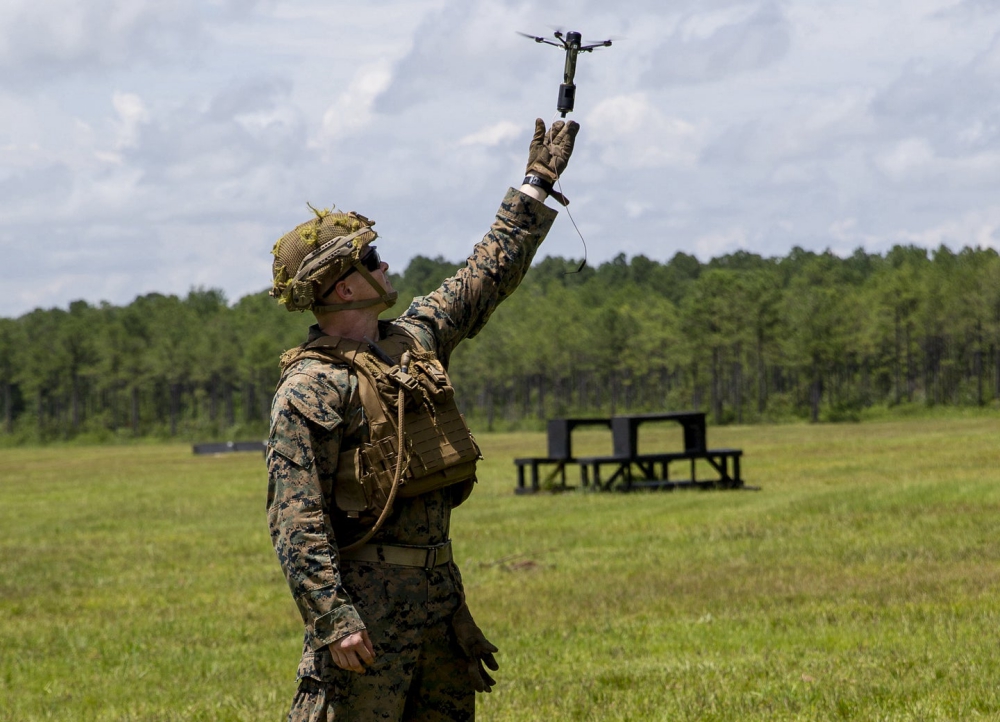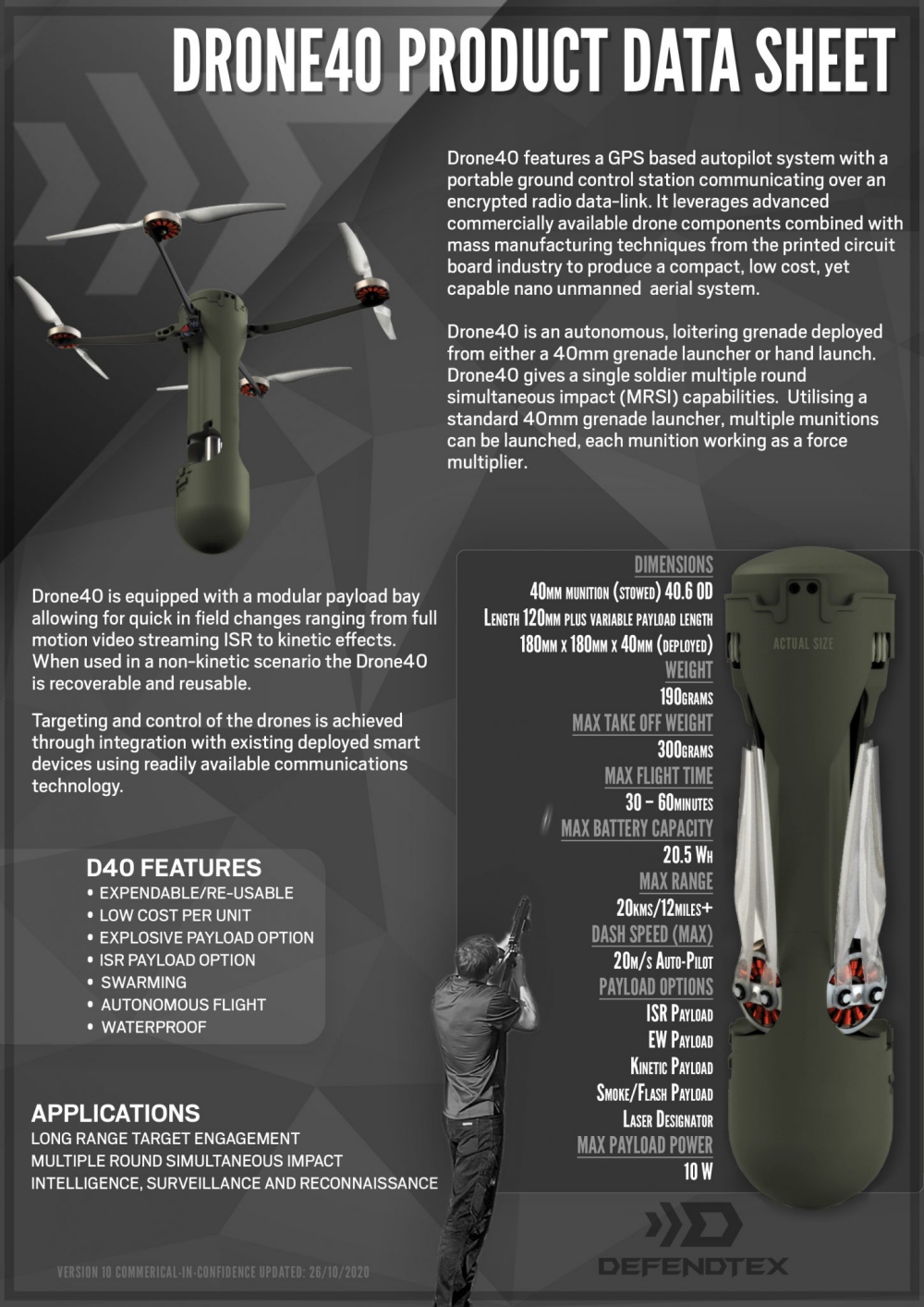With hands held overhead, the Marine waits for the grenade to spin up, and then releases it into the air. With a drone and its four rotors attached to the top of its body, the grenade takes off, a gentle flight for the typically hand-tossed munition.
Later in those same exercises, the grenade, still unexploded in this exercise, flies back for a landing, and the Marine catches it by a tether.
This scene took place July 7 at Camp Lejeune, North Carolina, as part of a training exercise. The flying grenade is a Drone 40 modular quadcopter from Australian manufacturer DefendTex. It can be either a scout or a loitering grenade.
What sets the Drone 40 apart from a host of other small drone designs is the long, vertical fuselage. Unlike most quadcopters, which are wider than they are all, the Drone 40 is alien in appearance. The shape of its body, and the name, both refer to the 40mm grenade launcher, a standardized way to hurl an explosive in battle. The Drone 40 can be both hand-tossed, as in the video above, or it can be fired as a grenade from a launcher.
At Camp Lejeune, the grunts of an experimental infantry battalion tested gear, including the Drone 40, to see what the Corps could learn, and if the Corps could adapt it for use in the future.
The origins of the Drone 40 trace back to a specific problem facing the Australian military. As Drone 40 maker DefendTex explained it in 2019, Australian soldiers had rifles accurate to 1,600 feet, but were fighting against foes in places like Iraq and Afghanistan with weapons deadly at over 2,600 feet. Launching a grenade is one way to close that gap. Another way would be to fly a grenade immediately to where the enemy is positioned, detonating it on contact. When used this way, the drone becomes an expendable weapon, destroyed in the blast.
Yet Drone 40 can also swap out the explosive payload for a handful of other options. An ISR payload, which stands for intelligence, surveillance, and reconnaissance, consists of a camera that can stream video to the control tablet of its remote human pilot. Using the drone to find an enemy position, and then returning to send it as a grenade, is one way having the Drone 40 could facilitate battle.
Every Drone 40 is battery-powered, and depending on weight and flight time, can be airborne for something between 30 and 60 minutes. At its fastest, the drone can travel nearly 45 mph, and DefendTex claims it can operate at a range of up to 12 miles, far eclipsing the gap in rifle ranges.
Source: Popular Science


